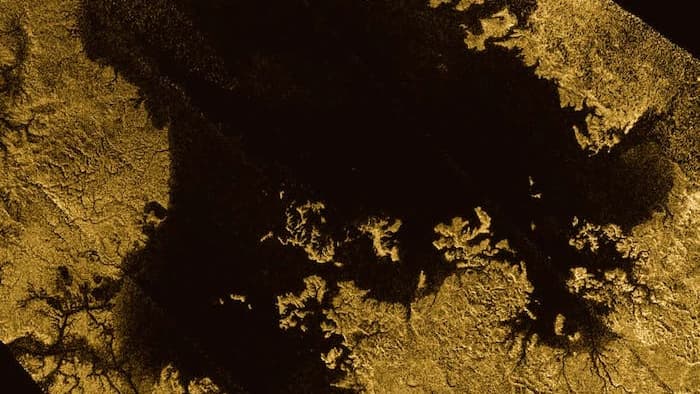Saturn’s biggest moon, Titan, is one of the most interesting bodies in the Solar System. It’s the only other place we know of, besides Earth, that very likely holds liquid water, in the form of a vast underground ocean, and its surface is somewhat Earth-like, splotched with lakes, rivers and seas, albeit of liquid methane and ethane. Scientists at Cornell University have analyzed data of Titan’s chemical composition and found that conditions could be right for non-water-based life to evolve, challenging our Earth-focused ideals of habitability.
 life is focused on searching within the Goldilocks Zone, the band around a star that’s not too hot and not too cold, but just right for liquid water where life can take hold. It’s a model based on the conditions that make Earth habitable, so finding Earth-like planets is a logical place to start.
life is focused on searching within the Goldilocks Zone, the band around a star that’s not too hot and not too cold, but just right for liquid water where life can take hold. It’s a model based on the conditions that make Earth habitable, so finding Earth-like planets is a logical place to start.
But is it too limiting? With an atmosphere of nitrogen and methane, Titan is far from habitable by human standards, but different forms of life could comfortably call it home. The key is a chemical called hydrogen cyanide (HCN), a versatile molecule that reacts with a range of other chemicals to produce polymers such as polyimine, which is known to be a possible catalyst for life.
“Polyimine can exist as different structures, and they may be able to accomplish remarkable things at low temperatures, especially under Titan’s conditions,” says Martin Rahm, one of the authors of the paper.
HCN is produced as a result of sunlight hitting Titan’s atmosphere, and data from NASA’s Cassini-Huygens mission says it’s abundant in the air – in fact, the huge vortex at the moon’s south pole is composed of the chemical. That atmospheric chemistry lends itself to the possibility that life could arise in conditions we might otherwise rule out.
“We are used to our own conditions here on Earth,” says Rahm. “Our scientific experience is at room temperature and ambient conditions. Titan is a completely different beast. We need to continue to examine this, to understand how the chemistry evolves over time. We see this as a preparation for further exploration. If future observations could show there is prebiotic chemistry in a place like Titan, it would be a major breakthrough. This paper is indicating that prerequisites for processes leading to a different kind of life could exist on Titan, but this only the first step.”
The research was published in the journal, Proceedings of the National Academy of Sciences.
Source: http://www.gizmag.com/
Dear User/Visitor! Please, answer on our questions: tick off one of the positions – your answer will make us able to improve our site and make it more interesting and useful!

